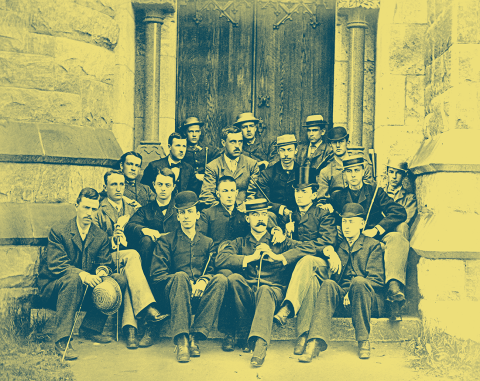BY Jeremiah Phillips '22
Prior

“The study of music in Amherst dates back to 1900 approximately and may be described briefly as the beginning of a process of education, the object of which is to acquire the ability to listen intelligently to music, Naturally such a process and education lasts as long as one lives.”
There was a lull before the hiring of Frederick Zuchtmann. Zuchtmann came from Springfield to teach vocal classes, and like Cheney before him, these classes were extremely popular on campus. Zuchtmann went on to form the Glee Club, made up of the best singers on campus. There was a second group as well, but this group did not receive as much attention, as it was the concert proceeds of the main group that secured Zuchtmann’s pay. Zuchtmann’s work would be greatly appreciated by the students of Amherst and the surrounding community, and the college was more than happy to list Zuchtmann as an instructor as long they didn’t have to foot the bill. But this arrangement could only last so long.
This lack of resources was the primary problem of the student-led groups and the reason that there were over fifty during the 19th century. That is not to say that the college did not support musical study, but that support only extended to sacred music, while many of the student groups studied secular music. There were two sacred music groups: the Lutheran Society (1821-1830) and the College Choir (or Chapel Choir) which existed from 1833 to 1965. Nevertheless, the students persisted in their efforts to bring a professor of music to the school.
Professor Bigelow arrived at the college in 1894 teaching courses in German and music, after intensive study with teachers in Europe. Not long after, Bigelow dropped the German classes and devoted all of his time to the instruction of music. Bigelow believed that music study should include learning the fundamentals of music theory; studying the masterpieces; and the playing of music itself.